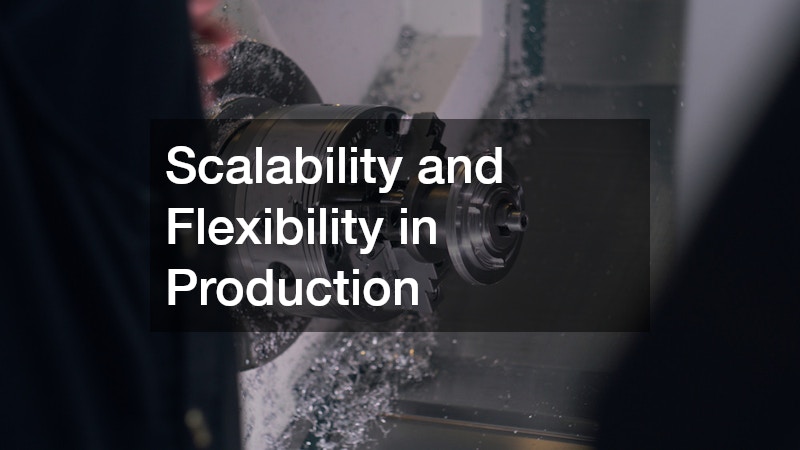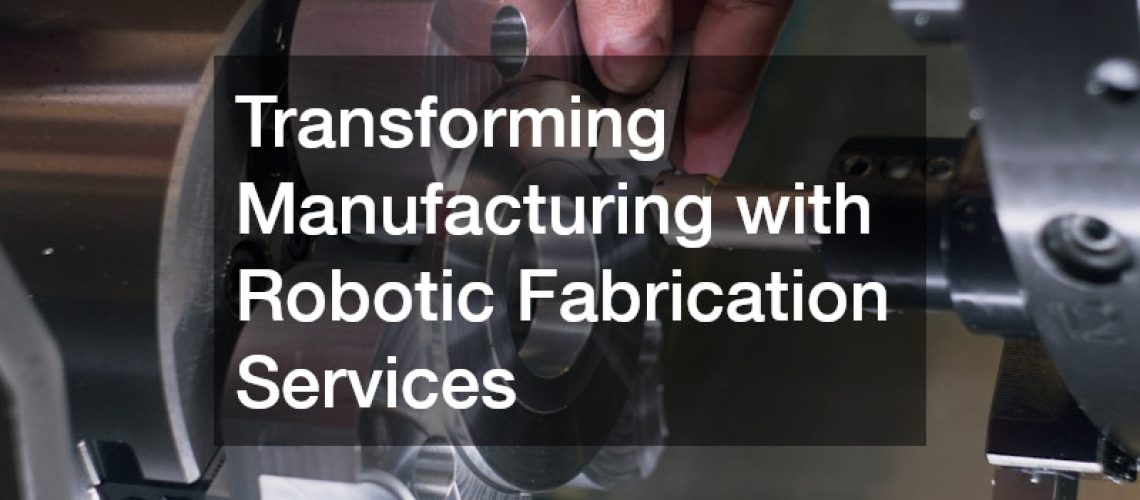The manufacturing industry is experiencing a groundbreaking transformation thanks to the integration of robotic fabrication services. This advancement is revolutionizing traditional manufacturing processes by enhancing efficiency, precision, and scalability. By diving into the implementation, benefits, and future prospects of robotic fabrication, we can better understand its profound impact on the industry.
The Rise of Automation in Manufacturing
Automation technologies are rapidly being adopted in manufacturing, significantly boosting productivity and efficiency across various sectors. Robots can work tirelessly and perform tasks with high precision, surpassing human limitations in repetitive and hazardous environments. The rise of automation has enabled manufacturers to meet increasing demands and maintain competitiveness in a fast-paced global market.
With automation, production lines can operate continuously, ensuring maximum output with minimal downtime. Advanced robotics are capable of learning and adapting processes, which further streamlines production and improves end-product quality. The integration of these technologies is no longer an option but a necessity for manufacturers aiming to optimize their operations.
Innovative Applications of Robotics
Robotic fabrication services are finding innovative applications in areas such as automotive, aerospace, and electronics manufacturing. In the automotive industry, robots are utilized for precision assembly tasks, welding, and painting, reducing human error and improving safety. The aerospace sector benefits from robotic inspection systems that ensure the structural integrity of components, enhancing quality control.
In the electronics industry, robots assist in the precise placement of tiny components, essential for the production of complex devices. Collaborative robots, or ‘cobots,’ are employed in environments that require human-robot interaction, further broadening their application. These cobots are designed to complement human capabilities, enhancing overall productivity and operational efficiency.
Challenges and Solutions in Implementation
Implementing robotic fabrication services is not without its challenges, particularly concerning cost and technical expertise. Initial investments can be substantial, posing financial hurdles for small to medium-sized enterprises. Additionally, the integration process requires specialized knowledge and skills, which may not be readily available in the existing workforce.
To address these issues, many industries have turned to partnerships with technology providers and invested in workforce training programs. Governments and educational institutions are also playing a crucial role by supporting initiatives to develop a skilled workforce ready to meet the demands of Industry 4.0. As a result, manufacturers can more smoothly transition to robotic automation, overcoming integration challenges.
Cost Reduction Strategies
The adoption of robotic fabrication services is a powerful cost reduction strategy in modern manufacturing. While initial investment costs are significant, the long-term savings on operational costs often justify the expenditure. By minimizing human error and reducing wastage, robotics facilitate efficient material utilization and lower production expenses.
Robots also contribute to substantial labor cost savings by taking over high-volume, routine jobs, allowing human workers to focus on more complex tasks. This shift not only optimizes human skills but also reduces the need for larger workforces, lowering overhead costs. Furthermore, the maintenance costs of robotic systems are often predictable and low compared to the costs associated with human labor including benefits, insurance, and potential downtime.
Scalability and Flexibility in Production
Robotic fabrication services provide manufacturers with unparalleled scalability and flexibility in production operations. The modular design of robotic systems allows businesses to scale production up or down rapidly, accommodating varying demand without disrupting continuity. This flexibility is crucial in industries that face seasonal variations or sudden spikes in consumer demand.
With robotics, manufacturers can reconfigure production lines quickly to produce different products, enhancing their ability to diversify product offerings. This adaptability gives businesses a competitive edge in the market, enabling nimble responses to changing consumer trends and preferences. Flexibility in production not only meets market demands but also fosters innovation and product evolution.
Trends Driving Future Developments
The future of robotic fabrication in manufacturing is shaped by emerging technological trends such as artificial intelligence and machine learning. These technologies enable robots to learn from data, improving their performance and adaptability in manufacturing environments. The integration of AI in robotics allows for greater autonomy, reducing the need for human intervention.
Another significant trend is the development of advanced sensors and Internet of Things (IoT) integrations, which enhance the capabilities of robotic systems. These advancements facilitate smarter manufacturing processes by enabling real-time tracking and analysis of production metrics. This connectivity fosters a more data-driven approach, guiding decision-making and optimizing overall efficiency.
Environmental and Sustainability Considerations
Robotic technologies play a crucial role in promoting sustainable manufacturing practices by enhancing resource efficiency and reducing waste. Precise material handling and energy-efficient operations contribute significantly to lowering the environmental footprint of industrial activities. This alignment of robotics with sustainability goals supports companies in meeting regulatory requirements and achieving corporate social responsibility objectives.
Robotic fabrication services are transforming the manufacturing industry by enhancing efficiency, precision, and scalability. As robotics become integral to manufacturing, they pose challenges that require strategic solutions and adaptation by businesses and workforces alike. The ongoing advancements in robotics promise to shape the future of manufacturing, contributing to a more agile, sustainable, and competitive industry landscape.


